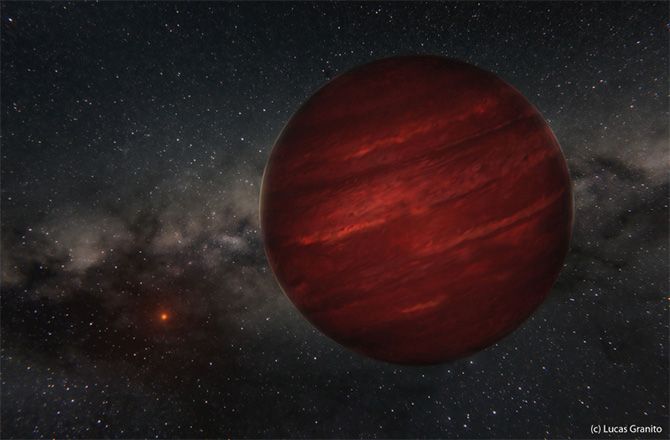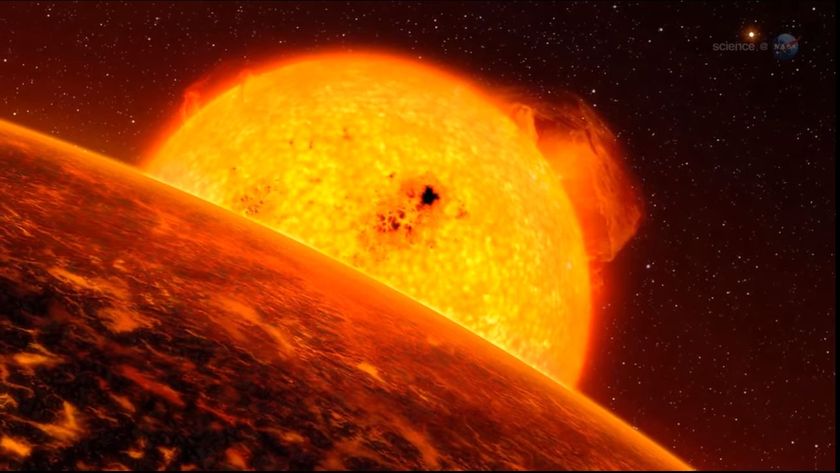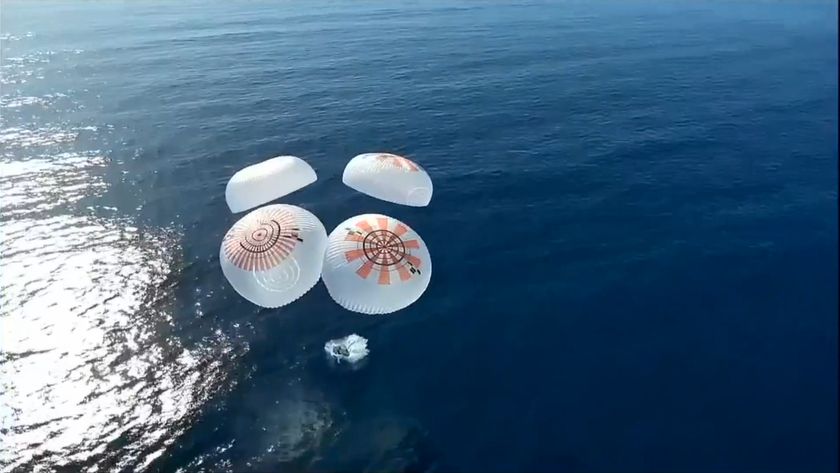Weird Loner Exoplanet Orbits Far From Its Star

An exoplanet that orbits its star at a whopping distance of 2,000 times the sun-Earth distance — taking 80,000 (Earth) years to complete one orbit — has been discovered. As far as exoplanets go, that’s the most extreme orbit found to date.
This exo-oddball was found during an observing campaign seeking out new worlds around a group of young stars. GU Psc, a star that is roughly a third of the size of our sun, was recently identified as a member of the AB Doradus group and became a ripe target for this exoplanetary search.
VIDEO: How to Detect an Exoplanet
These young AB Doradus stars are around 100 million years old and make attractive targets for exoplanetary searches through direct means. As the stars are so young, any planets in tow will still be hot after recently forming from stellar material. Therefore, by their nature, these worlds are radiating energy into space, illuminated in infrared light. [10 Exoplanets That Could Host Alien Life]
The most common methods used to detect exoplanets include the “transit” method and the “radial velocity” method. The former has been made famous by NASA’s Kepler space telescope that stared at one patch of the sky to see exoplanets drift in front of their parent stars, slightly dimming the starlight. The radial velocity method is commonly used by ground-based observatories that watch for the slight frequency shift of starlight caused by the gravitational wobble of an orbiting exoplanet.
NEWS: New Exoplanet Hunter Directly Images Alien Worlds
Direct imaging, however, can be a hard task and very few exoplanets have been discovered by this means. But in the case of GU Psc b, the young gas giant world was identified by an international team using several observatories. This research has been published in the Astrophysical Journal.
Get the Space.com Newsletter
Breaking space news, the latest updates on rocket launches, skywatching events and more!
“Planets are much brighter when viewed in infrared rather than visible light, because their surface temperature is lower compared to other stars,” said team leader Marie-Ève Naud, PhD student at the Department of Physics at the Université de Montréal. “This allowed us to identify GU Psc b.”
But the exoplanetary search wasn’t easy. “We observed more than 90 stars and found only one planet, so this is truly an astronomical oddity!” added Naud.
NEWS: Scientists Home In On Earth-Sized Exoplanet
Once the world was detected in infrared light, other observatories — including the Gemini Observatories, the Observatoire Mont-Mégantic (OMM), the Canada-France-Hawaii Telescope (CFHT) and the W.M. Keck Observatory — were used to discern its characteristics. By combining observational data with exoplanet models, the team have calculated that the world has a surface temperature of around 800 degrees Celsius (1,500 degrees Fahrenheit) and is 9-13 times the mass of Jupiter.
“GU Psc b is a true gift of nature,” said René Doyon, co-supervisor of Naud’s thesis and OMM Director. “The large distance that separates it from its star allows it to be studied in depth with a variety of instruments, which will provide a better understanding of giant exoplanets in general.”
Source: Université de Montréal
This article was provided by Discovery News.
Join our Space Forums to keep talking space on the latest missions, night sky and more! And if you have a news tip, correction or comment, let us know at: community@space.com.
Ian O'Neill is a media relations specialist at NASA's Jet Propulsion Laboratory (JPL) in Southern California. Prior to joining JPL, he served as editor for the Astronomical Society of the Pacific‘s Mercury magazine and Mercury Online and contributed articles to a number of other publications, including Space.com, Space.com, Live Science, HISTORY.com, Scientific American. Ian holds a Ph.D in solar physics and a master's degree in planetary and space physics.












